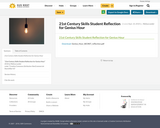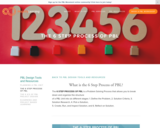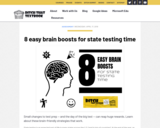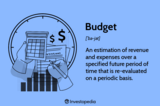
21st Century Skills Student Reflection for Genius Hour
- Subject:
- Education
- Material Type:
- Assessment
- Date Added:
- 09/10/2018

21st Century Skills Student Reflection for Genius Hour

This site offers a wide variety of activities, games, and strategies that make teaching division more effective … and more fun.

Un site de France pour l'enseignement des mathématiques, avec des leçons (cours), exercices (avec correction), et exercices répétitifs de calcul mental. Plusieurs fichiers sont disponibles aussi en format PDF.
« Tout élève qui souhaite s'entraîner peut trouver dans ce site des exercices corrigés correspondants à sa classe.
Les niveaux 6e, 5e, 4e et 3e couvrent l'ensemble du programme. Il n'y a ni compétition ni enjeu. Une solution est disponible à tout moment. Ce n'est le plus souvent qu'une solution parmi d'autres.
*Sauf indication contraire, il faut donner la réponse des exercices interactifs, s'il s'agit d'un nombre décimal, avec une virgule. Dans les exercices répétitifs, les nombres sont générés par l'ordinateur, il faut écrire les décimaux avec un point à la place de la virgule.*
Les exercices et les résumés de cours sont signalés de la façon suivante :
-Un résumé du cours : En géométrie, les images mobiles ou les animations flash permettent de visualiser les notions abordées.
-Exercice corrigé : Des exercices pour s'entraîner, avec les corrections disponibles à tout moment. Mais d'abord il faut chercher ...
-Exercice interactif corrigé: On peut répondre directement sur l'ordinateur, mais une feuille de papier et un crayon sont le plus souvent nécessaires pour faire l'exercice entièrement.
-Exercice répétitif : calcul mental : Entraînement au calcul mental sur les techniques basiques à acquérir en mathématiques.
Attention : il faut toujours commencer l'exercice par "recommencer' ou "nouveau calcul" , l'exercice affiché à l'écran n'est qu'un exemple. Il n'est pas à tester ! »

This resource provdies assessment materials for benchmarking and diagnostic testing students in the beginning of the year and monitoring their progress throughout the year with the skills explicitly taught in The Writing Revolution.

The 6 STEP PROCESS OF PBL is a Problem Solving Process that allows you to break down and organize the structure of a PBL Unit into six different stages: 1. Define the Problem, 2. Solution Criteria, 3. Solution Research, 4. Pick a Solution, 5. Create, Run, and Inspect Solution, and 6. Reflect on Solution.
This terrific resource has a FREE PDF file of this process and how to run each step. The site also includes many resources, blog articles, examples of the process in elementary, middle and high schools, rubrics, videos and more at each step of the process. A great one-stop shop!

This checklist will help guide students in using the 6 traits of writing in their work.

Small changes to test prep — and the day of the big test — can reap huge rewards. Learn about these brain-friendly strategies that work.
Cognitive science — the study of thought, learning and mental organization — tells us a lot about getting students primed to succeed on tests.
This resource outlines some practices that can help as you approach tests — and even on the day of the test:
1. Use retrieval to lock learning in long-term.
2. Mix up question types with interleaving.
3. Instead of cramming, space out practice.
4. Happiness is powerful.
5. Time of day matters.
6. Soak up the sun.
7. Breaks are essential.
8. Get up and move, move, move.

This article examines the steps required to involve students in their assessment. This article aligns closely with the PeBL philosophy and involves students throughout the learning process.

In this unit students will have an opportunity to investigate some of the many issues faced by Aboriginal people in Canada as well as learn where the various native groups live. It will include a discussion of the history of the relationship between Aboriginal people and Canada (whether under British rule or modern day government) in order to understand the root of many of the issues. Specific focus will be given to access to health care, access to education, substance abuse, teen pregnancy and suicide, poverty and low living standards and limited economic opportunity.
Developed for Grade 9 students in Ontario.

"Acadience Reading helps teachers identify children at risk for reading difficulties and determine the skills to target for instructional support. Acadience Reading K–6:
provides universal screening
detects when students need extra support
is sensitive to effects of intervention
supports the RtI/Multi-tiered model"
Download the screener for free on the top right side of the screen.

Students can explore a (lengthy) article entitled "18 Ways To Make Money Online and Offline in Canada". The article can be shared in groups as there are different sections with different work environments and arrangments. The students can work on two different assignments to explore the vocabulary, short answer, multiple choice and open ended questions to learn more from this article.

Students can explore these two investment game simulations and learn about the purpose of investing, the reasons for diversification of investments and explain the concept of risk tolerance including risk versus reward. Students may also be able to compare the advantages, disadvantages and ethical implications of various types of investments (stocks in this scenario). The STAX game is an interactive game, that allows students to diversify and try to beat the markets over 20 years. The Market Watch game is a simulation that used live prices and trading until the markets close (using fake money). https://www.marketwatch.com/games/fin-lit-sk-2425/portfolio?pub=x05tAm55u24F Password: investnow!

The material in this lesson will help students become aware of the warning signs of financial difficulties. When difficulties arise, students should first contact their creditors. Next, efforts should be made to revise spending patterns. In addition, assistance from a Credit Counseling service agencies might be considered. What if these actions do not help?

About this Lesson: In this lesson, students describe the roles of various financial institutions by analyzing bank advertisements. Students will research and then create a media product for a particular financial product or service of their choice. At the end of this lesson, students will use financial terminology fluently to build consumer awareness by investigating products and services offered by financial institutions.Suggested Timing: 2 hours

Part of micro-economics involves financial decision making at an individual level. Understanding "why" we do what we do, when it comes to decision making, will form an important foundation to making financial decisions. Cognitive Bias is a systematic error in thinking that occurs when people are processing and interpreting information in the world around them and affects the decisions and judgements they make. These two documents allow students and teachers to work through cases and situations where various types of cognitive bias exists and how it may impact decision making.

Meet Mia Saver and Ima Spender are two 23-year-old women who recently graduated from college. For a couple of years after graduation, neither of them saves any money for retirement. Both are focused on establishing their careers and purchasing household items. At age 25, both decide it’s time to start a retirement account. In this activity, we’ll use an online financial calculator to better understand the power of compounding, interest rates and time!

Broke is a documentary about sports stars who went from having millions of dollars to being broke and the mental anguish that comes along with this. The movie explores why this happens, mostly due to how many of the individuals lacked basic financial literacy skills. Students will develop 5 lessons / take-aways that they learned from the movie that the rest of us can learn from? They will discuss the themes and lessons shared regarding making responsible financial decisions, ways to gather information and explore how financial security (or lack of it) can have a major influence on mental health and well-being.

Outcome: FL10.5 Examine the role of personal budgets and their importance for financial planning. Indicator: i. Create and justify a personal budget for a hypothetical scenario that includes income and expenses. Students will read Gabrielle’s story and examine her budget. Use the table or budget sheet to set up and maintain Gabrielle’s budget. Then the students will need to re-do her budget for the next month to make it work that she doesn’t spend more than she earns. There is a final reflection and analysis for the students to learn from this budget activity and how it will help them in the future to budget unanticipated items as well.

This lesson includes full classroom sequence including suggested intro activities, timing, formative and summative activites, and context for teaching. In this lesson, students will identify and review their expenses and income and learn to create a budget. At the end of this lesson, students will: know, understand and/or can distinguish between needs and wants and create a personal budget. According to a FCAC’s 2024 Canadian Financial Wellbeing Survey, 53% of Canadians have household budgets. 62% of respondents say their debt increased by more than $5000 in the past 12 months and only 54% had an emergency fund to cover 3 months of expenses (down from 64% in 2019) 32% of Canadian say they are short on money at the end of the month (vs. 19% in 2019), which means budgeting isn’t going as well as it should be. So, since budgeting seems to aid in your financial health, why don’t most Canadians follow their budget?

This resource provides a listening guide, presentation and student assignment on the topic of "Buy Now, Pay Later", which has become a very popular way to finance everyday purchases. Students are challenged to identify the rise of BNPL programs and how they can "hurt" your credit score and lead to irresponsible borrowing in the future.